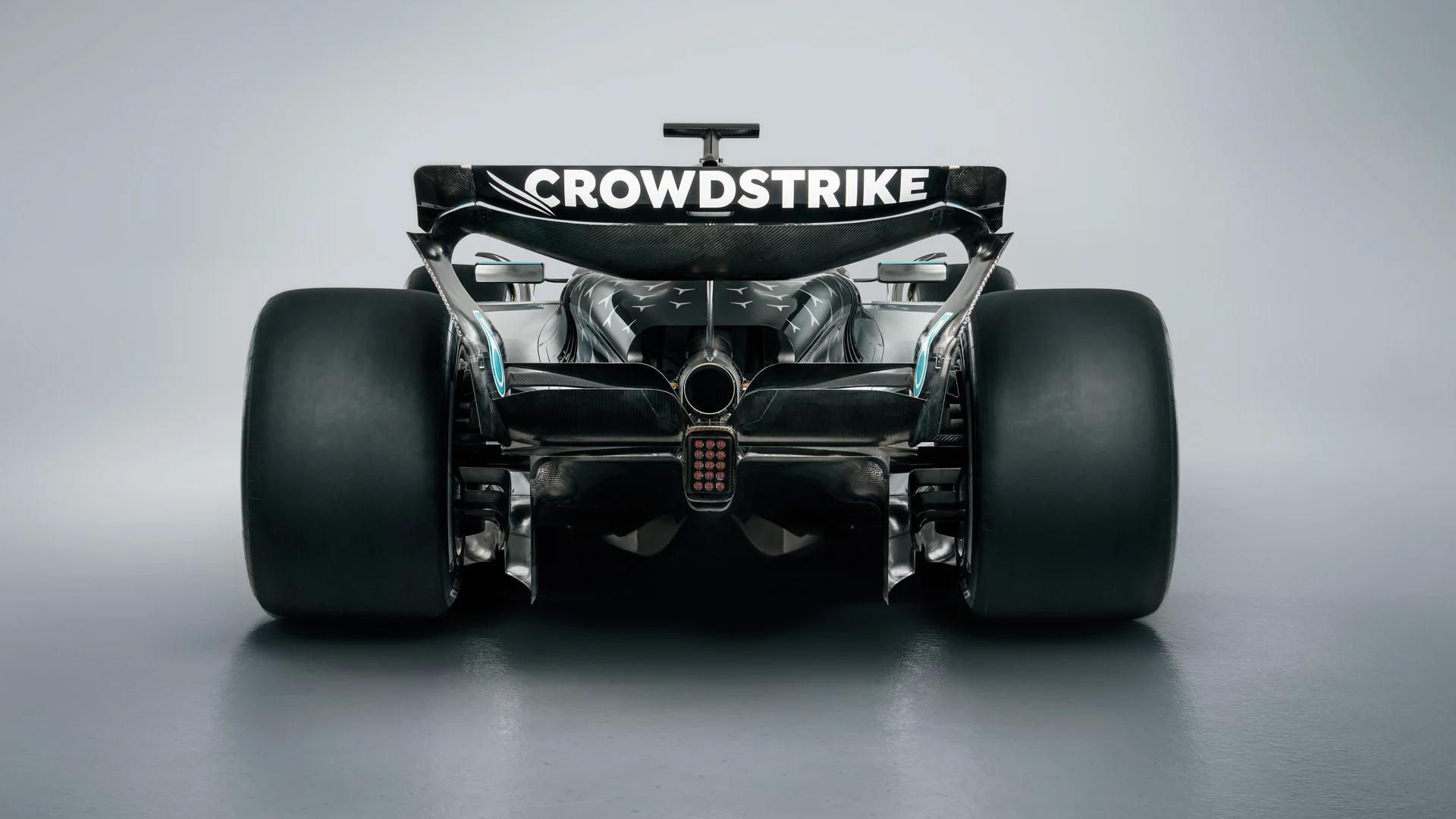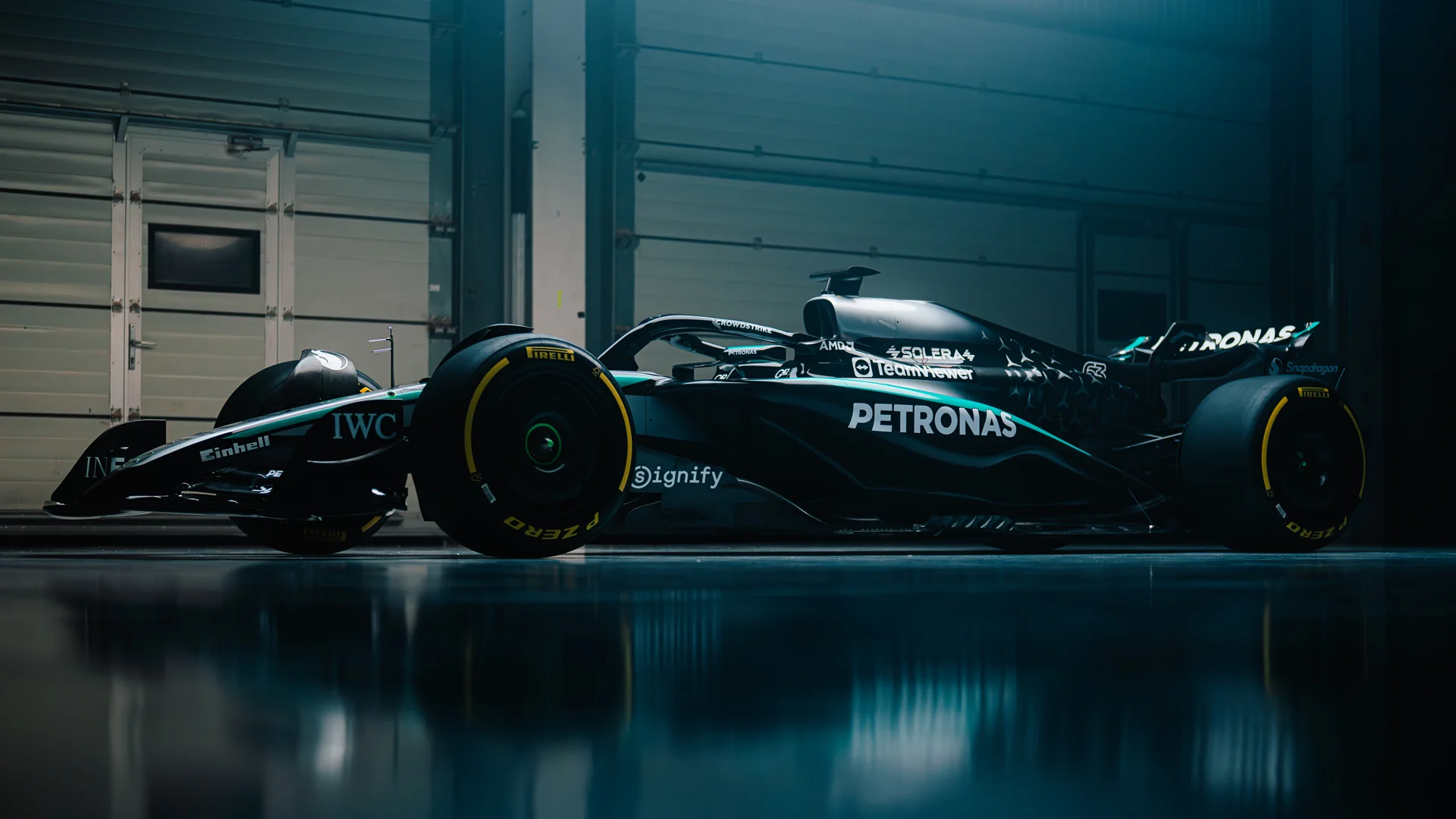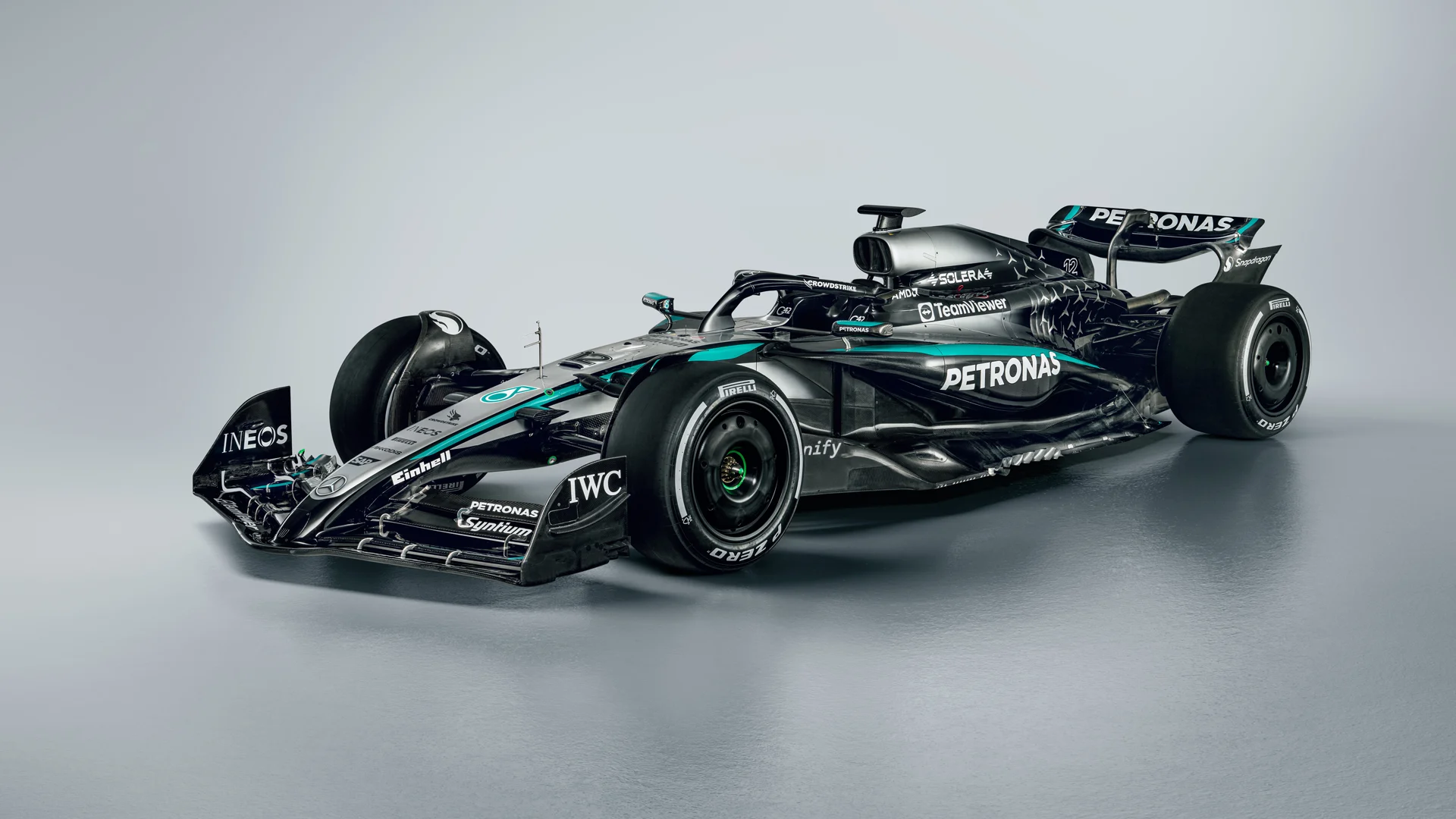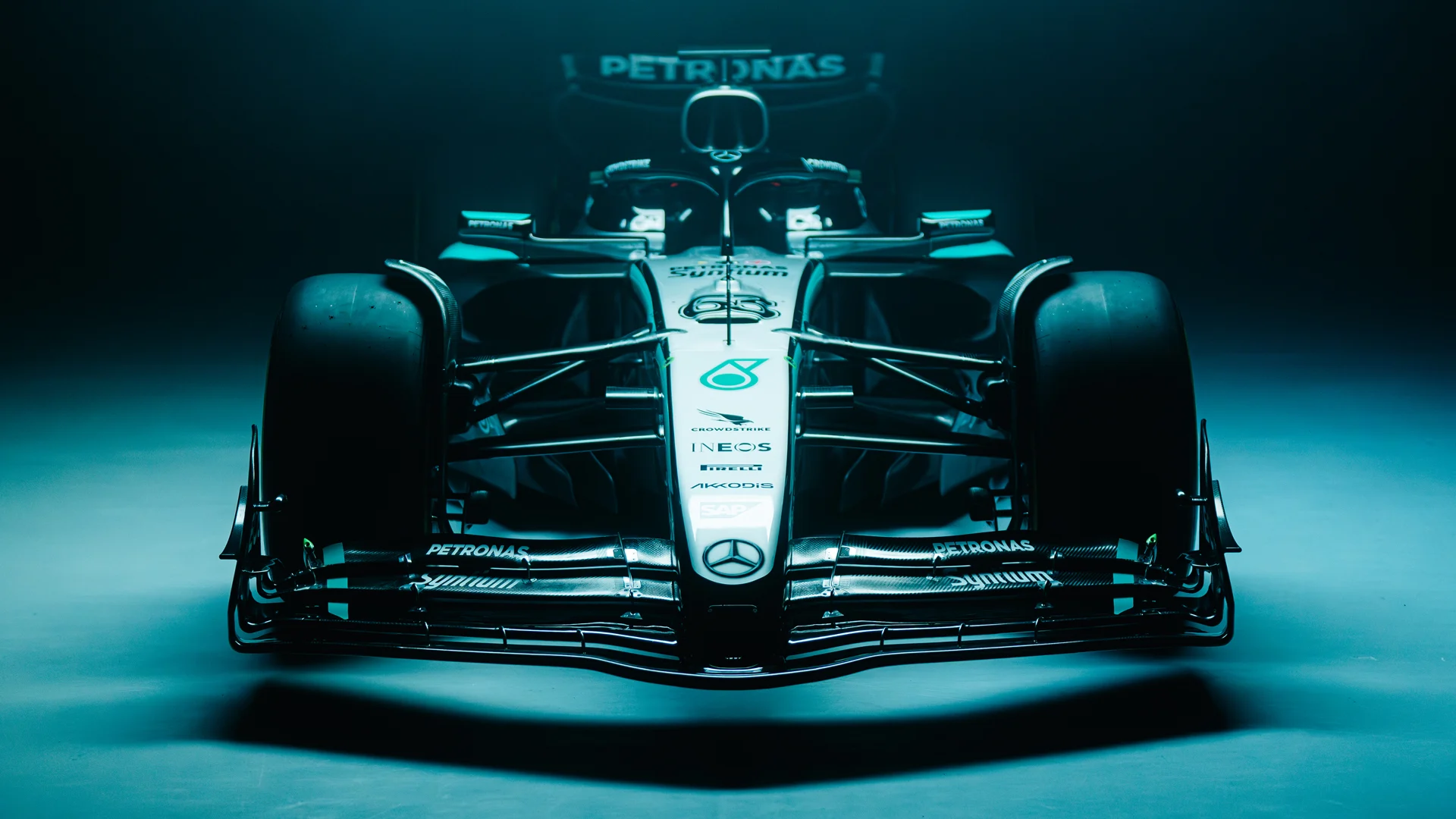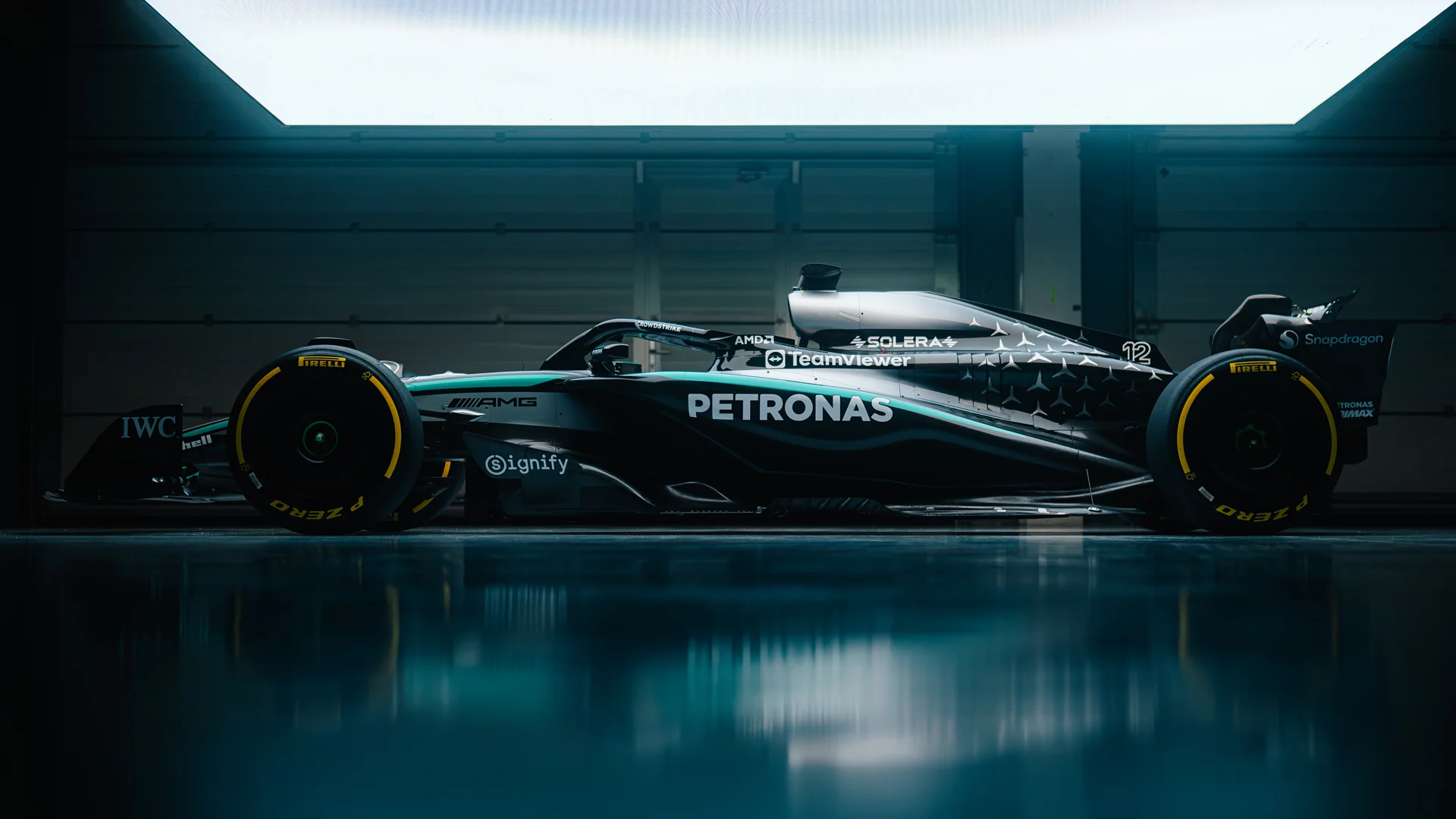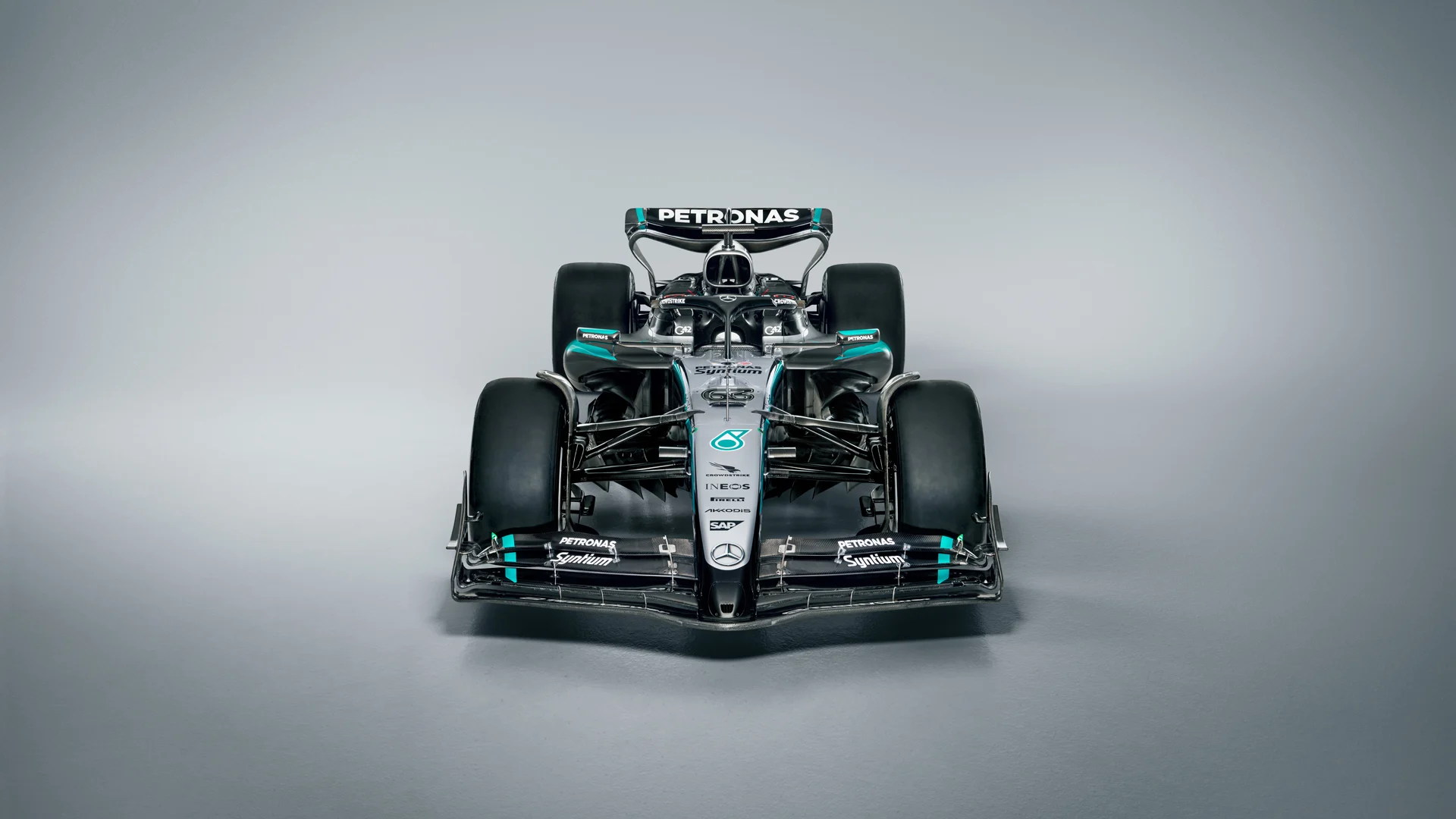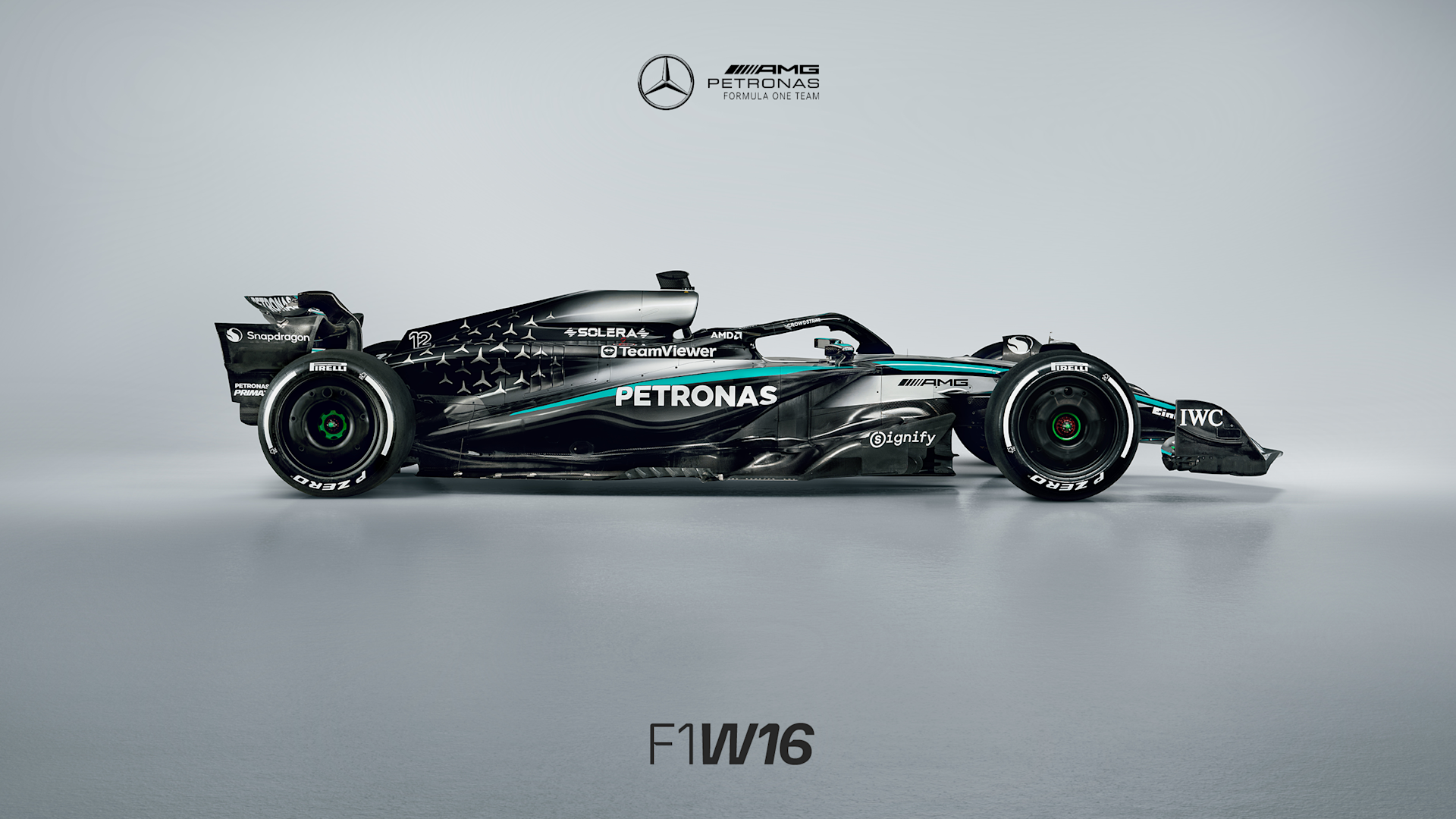
The Next Chapter: Mercedes W16 for the 2025 F1 Season
New season. New car. New line-up.
“We open an exciting new era in the story of our team and Mercedes-AMG motorsport in 2025. We are building on the incredible legacy of our heritage, and we can’t wait to go racing,” declares Toto.
Chassis & Power Unit Overview
The 2025 F1 season represents the fourth year of the current chassis formula and the 12th year under the existing hybrid power unit regulations. While the major overhaul awaits in 2026, 2025 is all about refining what exists.
Technical Director James Allison explains the developmental approach behind the W16:
“Being the fourth year of these regulations on the chassis side, the cars are in the more mature phase. Big gains in lap time are harder to come by but we’ve been focused on making improvements in the areas that held us back last year.”
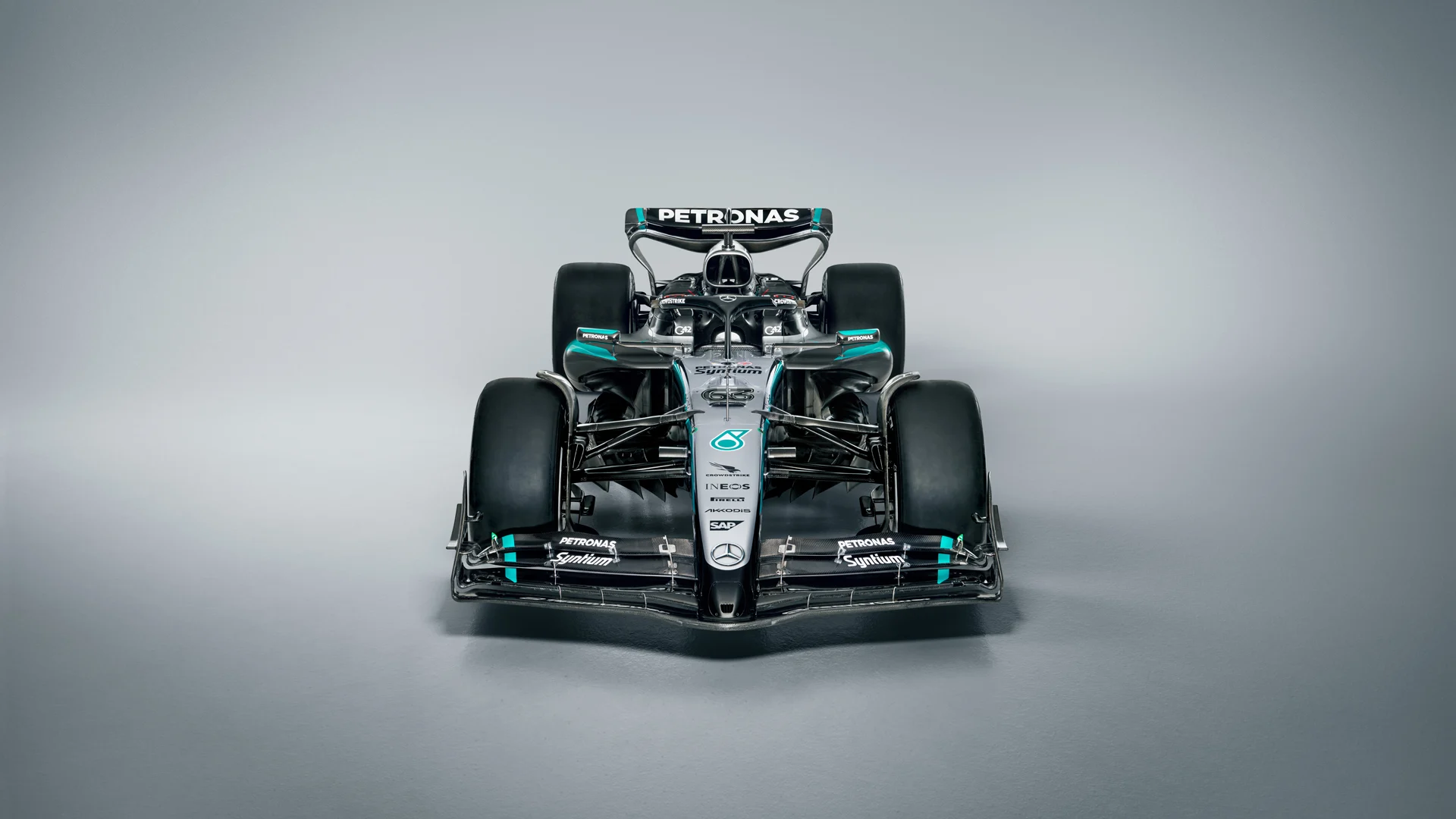
“Our primary focus has been on dialling out the W15’s slight reluctance to turn in slow corners, along with the imbalance in tyre temperatures that made the car inconsistent from session to session,” he continues.
These focus areas have led to significant engineering changes:
- Redesigns across almost all external aerodynamic surfaces
- An updated front suspension system
- Substantial improvements beneath the surface to fix legacy issues from the W15
“We are pleased with our progress over the winter and we’re looking forward to finding out where we stack up against everyone else,” adds James.
Stay Updated on the W15: Mercedes AMG F1 Website: Keep an eye on their official website (https://www.mercedesamgf1.com/) for press releases, car launch details, and technical insights.
Power Unit Focus
While the Power Unit (PU) specifications remain frozen under FIA regulations, that hasn’t halted the team’s behind-the-scenes development.
Hywel Thomas, Managing Director of Mercedes AMG High Performance Powertrains, sheds light on the ongoing PU work:
“We have been looking at reliability updates, and some calibration upgrades, to deliver robustness, squeeze the last little bits of performance out of the Power Unit and give ourselves the best opportunity this season. We’ve made good progress and hopefully that can add performance on track.”
- Technical Specifications
- Engine Specifications
Monocoque
Moulded carbon fibre and honeycomb composite structure
Bodywork
Carbon fibre composite including engine cover, sidepods, floor, nose, front wing, and rear wing
Cockpit
Removable driver’s seat made of anatomically formed carbon composite, six-point driver safety harness, HANS system
Safety Structures
Cockpit survival cell incorporating impact-resistant construction and penetration panels, front impact structure, prescribed side impact structures, integrated rear impact structure, front and rear roll structures, titanium driver protection structure (halo)
Front Suspension
Carbon fibre wishbone and push rod-activated springs and dampers
Rear Suspension
Carbon fibre wishbone and push rod-activated inboard springs & dampers
Wheels
BBS forged magnesium
Tyres
Pirelli
Brake System
Carbone Industries Carbon / Carbon discs and pads with rear brake-by-wire
Brake Calipers
Brembo monobloc calipers in nickel-plated aluminium alloy machined from solid block (front and rear)
Steering
Power-assisted rack and pinion
Steering Wheel
Carbon fibre construction
Electronics
FIA standard ECU and FIA homologated electronic and electrical system
Instrumentation
McLaren Electronic Systems (MES)
Fuel System
ATL Kevlar-reinforced rubber bladder
Lubricants and Fluids
PETRONAS Tutela
Gearbox
Eight speed forward, one reverse unit with carbon fibre main case
Gear Selection
Sequential, semi-automatic, hydraulic activation
Clutch
Carbon plate
Type: Mercedes-AMG F1 M16 E PERFORMANCE
Minimum Weight: 150 kg
Power Unit Perimeter:
- Internal Combustion Engine (ICE)
- Motor Generator Unit – Kinetic (MGU-K)
- Motor Generator Unit – Heat (MGU-H)
- Turbocharger (TC)
- Energy Store (ES)
- Control Electronics (CE)
Power Unit Allocation:
- Four ICE, TC, MGU-K & MGU-H per driver per season
- Two ES & CE per driver per season
Internal Combustion Engine (ICE):
- Capacity: 1.6 litres
- Cylinders: Six
- Bank Angle: 90
- No of Vales: 24
- Max rpm ICE: 15,000 rpm
- Max Fuel Flow Rate: 100 kg/hour (above 10,500 rpm)
- Fuel Injection: High-pressure direction injection (max 500 bar, one injector/cylinder)
- Pressure Charging: Single-stage compressor and exhaust turbine on a common shaft
- Max rpm Exhaust Turbine: 125,000 rpm
Energy Recovery System (ERS):
- Architecture: Integrated Hybrid energy recovery via electrical Motor Generator Units
- Energy Store: Lithium-ion battery solution of minimum 20kg regulation weight
- Max useable energy storage on track: 4 MJ
- Max rpm MGU-K: 50,000 rpm
- Max power MGU-K: 129 kW (161 hp)
- Max energy recovery/lap MGU-K: 2 MJ
- Max energy deployment/lap MGU-K: 4 MJ (33.3 s at full power)
- Max rpm MGH-U: 125,000 rpm
- Max power MGU-H: Unlimited
- Max energy recovery/lap MGU-H: Unlimited
- Max energy deployment/lap MGU-H: Unlimited
Fuel and Lubricants
- Fuel: PETRONAS Primax
- Lubricants: PETRONAS Syntium
